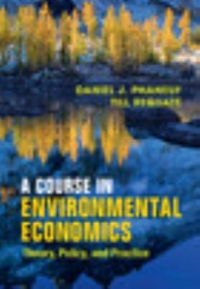This exercise is based on a subset of the data analyzed by Murdock (2006), and describes 2,404
Question:
This exercise is based on a subset of the data analyzed by Murdock (2006), and describes 2,404 trip outcomes to 100 angling destinations in the American state of Wisconsin. The data set WI_100 is available on the book’s website. It is organized around the following worksheets:
choice – person id and site chosen on each of 2,404 observed trip outcomes;
price – travel costs to each of the 100 sites for each of the 2,404 outcomes;
household – decision-maker characteristics boat and kids, where boat=1 if the person owns a boat and kids=1 if there are children in the household;
attributes –site quality/attribute variables labeled and ordered ramp, bath, walleye, salmon, and pan fish. The attribute variables are as follows: an indicator if the site has a paved boat ramp (ramp), an indicator if the site has public restrooms (bath)
and catch rates per trip for the sport fishing species walleye, salmon, and pan fish.
(a) Using these data, estimate a RUM model that includes only the fish catch rate as explanatory variables. Calculate the marginal willingness to pay for a change in expected walleye catch rate.
(b) Estimate the model again, but this time include the site attributes ramp and bath in the specification as well as interactions between ramp and the household attribute boat, and bath and the household attribute kids. Once again calculate the marginal willingness to pay for a change in walleye catch rate, and explain any differences you find from (a).
(c) Identify the ten sites with the highest share of aggregate visits.
Calculate the per choice occasion willingness to pay for a policy that increases the walleye catch rate at these ten sites by 30 percent.
Identify the site with the highest share of aggregate visits. Calculate the per choice occasion value of access to the site.
(d) Now estimate the model with a full set of alternative specific constants, in addition to the interactions between boat and ramp and bath and kids. Use a second-stage regression to estimate the main effects for ramp and bath as well as the three catch rate variables.
Describe any differences you see from part (b) and explain what might drive these differences.
(e) Repeat the welfare calculations from part (c) using the model with the full set of alternative specific constants and describe any differences in your findings.
Step by Step Answer:

A Course In Environmental Economics
ISBN: 9781316866818
1st Edition
Authors: Daniel J Phaneuf, Till Requate





